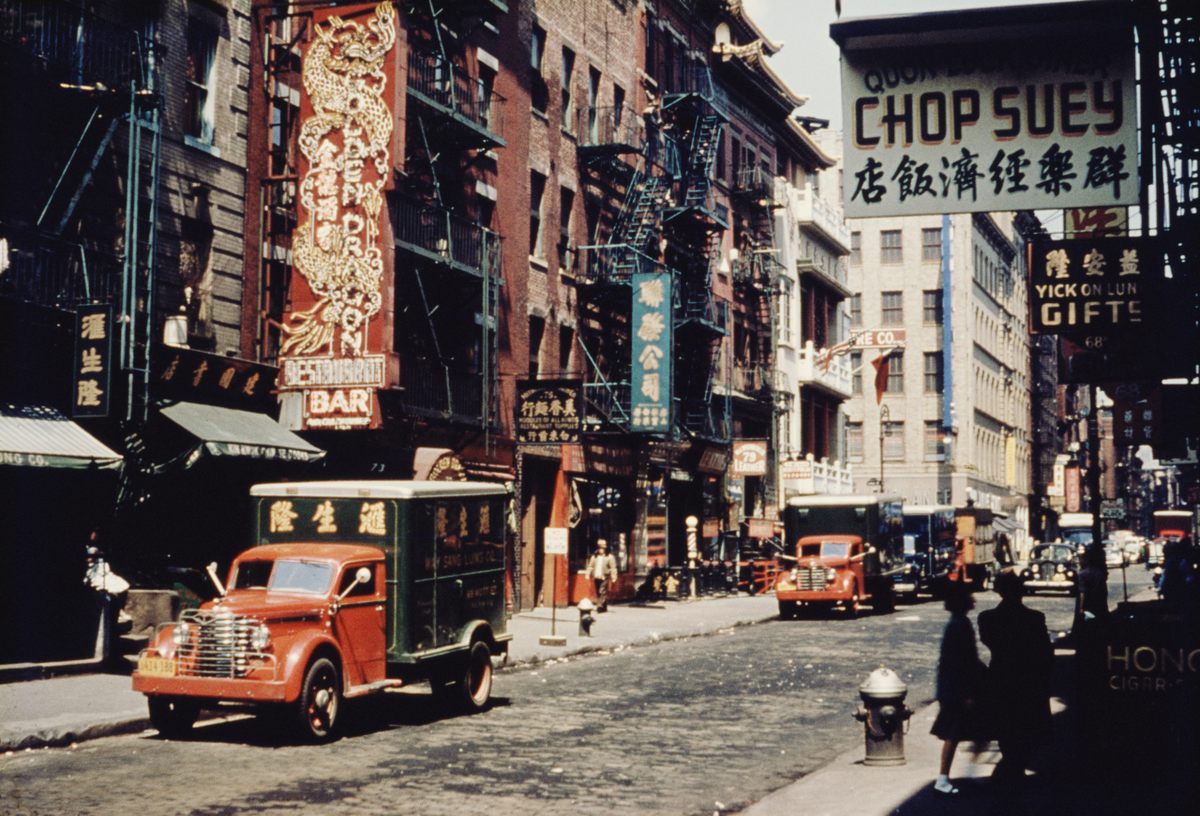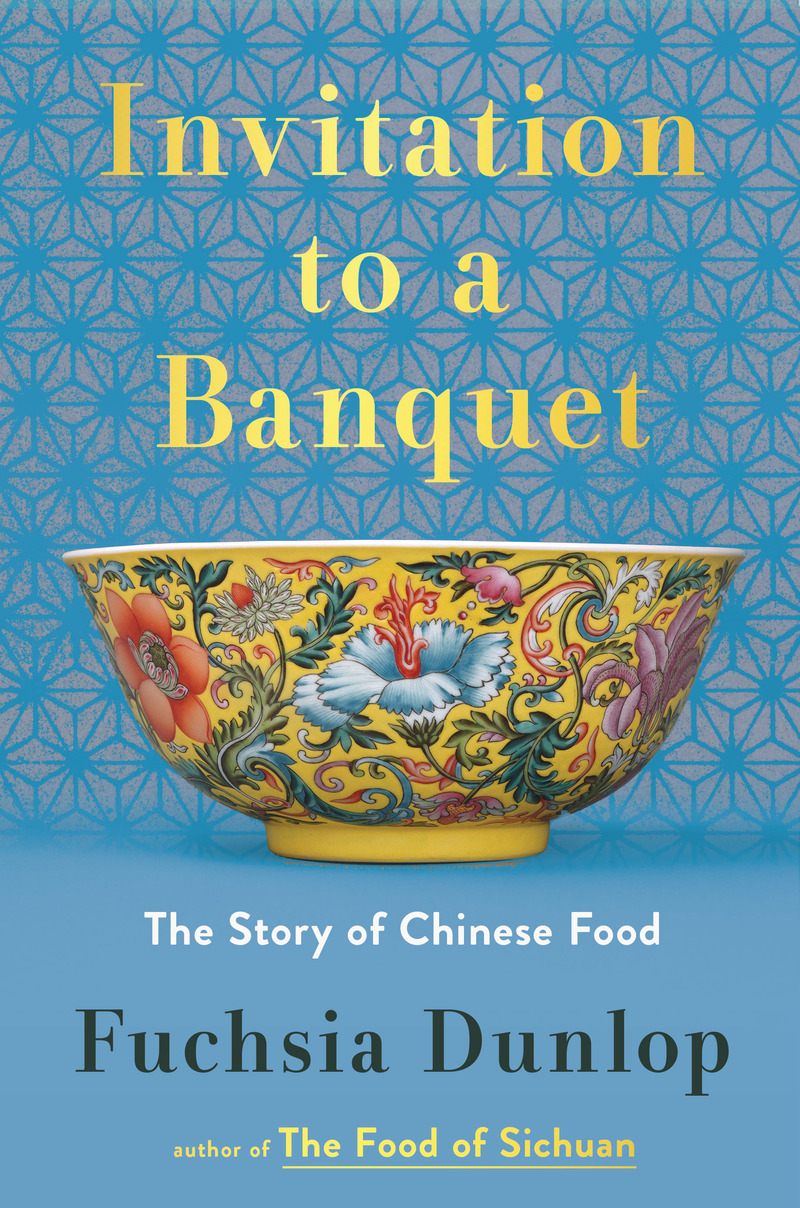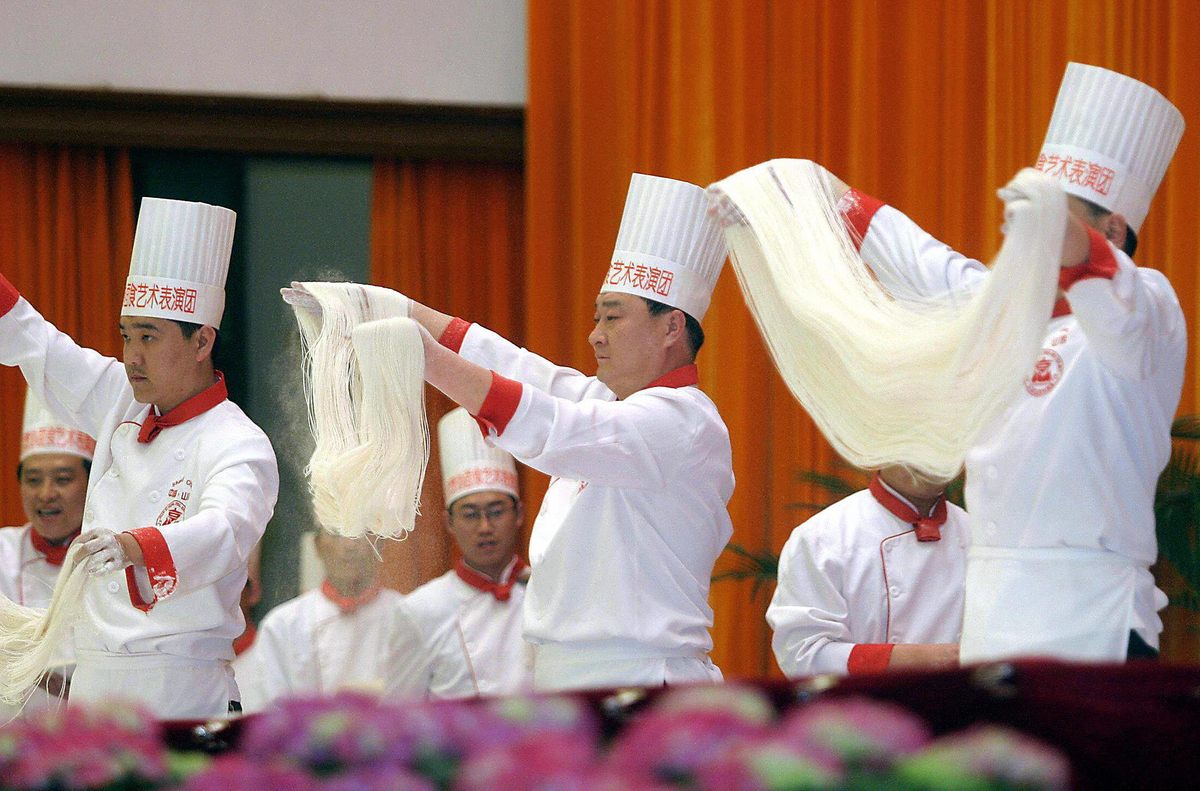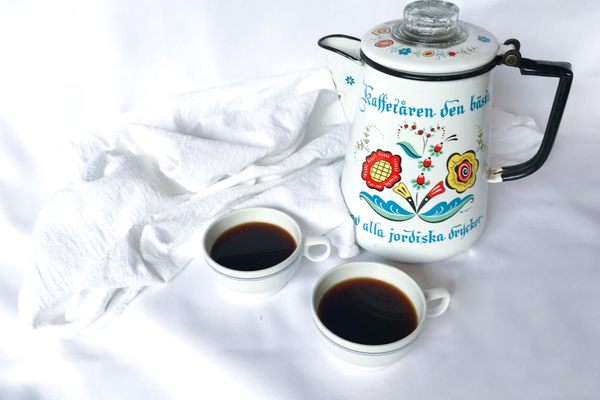

Feast on 2,000 Years of Chinese Culinary History
Fuchsia Dunlop’s ‘Invitation to a Banquet’ is a delicious tour de force.
In the 12th century, roughly 600 years before Paris’s first restaurant welcomed customers, Kaifeng, China, already had a thriving restaurant scene. By then, the Song Dynasty was underway and the city’s roughly 1 million residents could not only choose to eat out, but select a restaurant specializing in certain dishes or cuisines.
“If cooking was key to the revolution of humans in general, only the Chinese have placed it at the very core of their identity,” writes Fuchsia Dunlop in Invitation to a Banquet: The Story of Chinese Food, which comes out in the U.S. today. The four-time James Beard award winner, who became the first foreigner to graduate from the Sichuan Higher Institute of Cuisine in the 1990s, has written seven books over the course of nearly three decades on the wondrous intricacies of Chinese cuisine.
Her latest is one of her most ambitious works to date, a sprawling exploration of a nation that has prized eating for pleasure as well as subsistence for thousands of years. In the process, she leads readers from Shanxi Province for superlative noodles to the outskirts of Chongqing for platters of chicken buried in scarlet chiles to Los Angeles for chop suey and chow mein.

While the book brims with descriptions of delectable feasts, this is more of a historical deep-dive than it is a travelog. Above all, Dunlop wants her readers to approach Chinese food on its own terms and to challenge common misconceptions about it. She explores a time before rice’s dominance, when emperors offered sacrifices to “Lord Millet”; why the roots of Japanese sushi lie in Chinese zha; and why the wet markets unfairly maligned in Western press in 2020 are essential to communities.
Gastro Obscura spoke with Dunlop about how to use MSG, the subtle joys of texture, and Neolithic steamer baskets.
You begin the book with sweet-and-sour pork balls and end with chop suey, both foods that originated within the Chinese diaspora, rather than in China itself. Why?
The whole book is intended to be a kind of manifesto for Chinese food, because it just doesn’t have the acknowledgement that I think it should have as being one of the world’s greatest cuisines, as well as one of the most diverse, complex, and sophisticated.
The reason is that most people outside China have encountered Chinese cuisine in these very limited ways, like the sweet-and-sour pork balls in England, and American Chinese food, which was very much adapted to particular circumstances. It largely drew on the cuisine of one region. It was developed at a time when Westerners were very skeptical about Chinese food.
I wanted to start with the way I first encountered Chinese food, which I think is something that I share with an awful lot of people in the West, certainly of my generation. I ended with it, because I hope that having been on this journey through some of the wonders of food in China, that going back to chop suey really puts it into perspective. That highlights the contrast between the very limited way in which Chinese food has been appreciated in the West and what is out there to learn.

It’s important to note that you’re not saying that chop suey is bad, but rather that context is essential, and it’s not reflective of the breadth of Chinese cuisine.
It’s one aspect. All the elements of American-Chinese food exist in Chinese cuisine—the cutting food into small pieces, the cooking methods and so on. But just as a sort of compiled version of Chinese cuisine, it’s really unrepresentative. There’s a chapter about Western food in Shanghai, which I hope also makes that point.
When I lived in China, I loved seeing the “Western restaurants” serving spaghetti and steak and hamburgers, as if it’s all just one cuisine.
Exactly. I always make the analogy between the way people talk about Chinese food in the West and the way people in China come up with all these sweeping statements about Western food. If you’re from Europe or America, you think, What? How could you possibly lump everything together?
You first moved to Chengdu in 1994. How do you feel global attitudes toward Chinese food have changed since then?
I think in many ways they’ve evolved for the better. Certainly in the last 20 years, we’ve seen in many Western cities this blossoming of regional cuisines. For example, Sichuanese is incredibly popular now, not only with Chinese customers, but with everyone else. In New York, there’s some very nice Shanghai cooking. In London [where Dunlop is based], we’ve got some Dongbei, northeastern cooking.
This idea that Chinese cuisine is just one sort of food has really been shattered. I also think that the food that is accessible now in the West is more representative because there are lots of Chinese students who are Chinese-born. Of course, you can still go to restaurants where the menu is designed for Westerners, but you can also go and eat with Chinese people on their terms. Also that the fact that China has become kind of rich and powerful inevitably has helped to raise the status of Chinese food.
But also, I think we saw during the COVID pandemic early days, certainly in Britain and America, some of these ugly old stereotypes still ticking away in the background, which I found rather disturbing.

I almost don’t even want to bring up the nonsense about “bat soup” in 2020, but you do point out a number of instances of these racist stereotypes. You cite a 2002 Daily Mail article that called Chinese food “the dodgiest in the world, created by a nation that eats bats, snakes, monkeys” and so on. How do you push back against this kind of language?
One of the things that I’ve really tried to do with the whole book is to have a look at some of these stereotypes about Chinese food. Some of them are just completely ridiculous, like the idea that Chinese food is unhealthy. It’s such a health-conscious culture when it comes to food.
Or this idea about Chinese people eating everything; to a certain extent, it’s true. The Chinese are really adventurous. They eat a huge range of different ingredients. I think it’s always been portrayed in the West in a very negative light, and I find it very positive and inspiring. It is creative. It is technically ingenious. It also could be seen as something that offers inspiration for eating more sustainably, for making use of unusual ingredients, and for minimizing waste.
I loved your old Lucky Peach article on eating stag pizzle called “Dick Soup.” When you’re writing about ingredients like this or, say, jellyfish or bear’s paw, for a Western audience, how do you do so in a way that doesn’t play into those harmful stereotypes?
I think it’s very natural to be skeptical and humorous about unfamiliar foods. We all are. Chinese people think about Western food in exactly the same way. So I think that I try to write about them with some humor, but I also try to describe the sensory pleasures and the reasons why people might eat them.
I’m a real convert, so I don’t have a problem with eating these things. And many of them I find incredibly delicious, and I hope to communicate that to readers while at the same time acknowledging that some of them might initially find these things a bit weird.
Particularly one thing I love writing about is texture, because it’s a real cultural difference. It’s something that Westerners find surprising. They just don’t think about the pleasures of the mouth, aside from taste, in the complex and appreciative way that the Chinese do. In my experience, learning how to enjoy texture has massively expanded the possibilities of gastronomic pleasure and particularly the appreciation of Chinese food.

Were there historical through lines that you found that shaped your understanding of how Chinese cuisine got to be the way that it is?
With Chinese food, you have certain threads that go back 2,000 and more years. [Some are] even more, like steaming, which goes back to the Neolithic Age. I mean, they found pottery steamers at Stone Age sites. The fermented black beans that you have in black bean sauce go back more than 2,000 years. They’ve basically been made in the same way since then.
The use of soy foods and the fact that they, in many ways, have taken the place of dairy in Chinese culture—which does exist, but in a minor role. And the way that this choice to use fermented beans as a source of protein and as a flavoring in soy sauce and other fermented foods has shaped the flavors of Chinese food. It also shaped the landscape, because they don’t have herds of cattle and great flocks of sheep.
Another very interesting thread is cutting food, something that is intimately related with the choice to use chopsticks at the table. Many of the early Western observers of Chinese food noticed that the food was cut into small pieces and often said, “We didn’t know what we were eating.” That played into the suspicious hostility of Chinese food. Like, “What is it? There are little slivers in my dish. Is it really chicken? Or could it be something more frightening like snake?”
Then on top of that, you have this amazing history of cultural exchanges and multiculturalism, which is something I also wanted to write about because Chinese food is not one thing, it’s really diverse. Also, it’s extremely regional and many important ingredients and cooking methods and things came from abroad.
I did one chapter about the food of the Hui Muslim group in the north of China. And a lot of their cooking has roots in Central Asia: bread and sheep meat. Then of course, the chili came in from the 16th century onward and that was an American ingredient, but it’s hard to imagine Sichuanese food without it.
China is a really food-focused culture. People have articulated incredible pleasure in gastronomy for thousands of years. They’ve seen good food as being the basis of health in a very intellectual way. They have also put food at the center of their family and religious rituals. So there are all kinds of reasons why food is very important in China. And this is just reflected in [cuisines that are] hugely thoughtful and ingenious and delicious.

What are the attitudes you’ve encountered toward MSG among chefs within the mainland and also what are some of the attitudes that you would maybe seek to correct from outside of China about it?
A key difference is that in the West, MSG has never been used at home. MSG has only been used as a seasoning in junk food, fast food, and manufactured food. People don’t associate it with quality. In China, that’s not the case. People do use it at home. Not everyone, not all the time, but it hasn’t been stigmatized, and very good chefs use MSG.
In China, when I was a student chef, my teachers talked all the time about xiān, which is the Chinese word for umami. You had all these ways of what they call xiān wèi, which means to enhance the umami flavor. So traditional methods were to use things like cured ham, stock, or lard. And MSG does the same thing, really.
What MSG does is it amps up umami flavors in some very plain dishes. In a cold dish made of a lightly flavored shredded vegetable, sometimes just a pinch of MSG can make it taste more delicious. In Sichuan hot pot, you dip the ingredients into sesame oil with garlic. I find if you add a bit of MSG to that, it makes it a bit more sparkly and less oily.
I don’t use it myself. There are two reasons for that. One is because my intention was really to write about the best of Chinese food for Westerners. I know there’s a lot of prejudice, so there was no point, really, in using MSG if it would be counter to what I was trying to do. The other reason is that I’m a real traditionalist, and I don’t think you need it. If you want umami flavors, there are plenty of other options, like fermented black beans, soy sauce, or dried shrimp.
My own feeling about [MSG] is that it’s a bit like sugar or salt. They’re all naturally occurring substances that we refine and produce in a very accessible form, and if you use too much of them, they’re not great.
I think some people in China now are being affected by the Western stigma for MSG. For example, some healthy food–type restaurants don’t use MSG and some very high-end chefs don’t use MSG, but make their own stocks. That is partly a statement of traditionalism, but I think also, it’s a way of rejecting mass culture as represented by MSG.
You’ve been immersed in Chinese food culture for much of your life. How has your view shifted?
The incredible thing is that after all this time, after nearly 30 years of all this eating, it just gets more and more interesting. It’s an inexhaustible subject. There are so many dishes and regions and flavors and ingredients. I will never, ever get bored.
This interview has been edited and condensed.
Gastro Obscura covers the world’s most wondrous food and drink.
Sign up for our regular newsletter.
















Follow us on Twitter to get the latest on the world's hidden wonders.
Like us on Facebook to get the latest on the world's hidden wonders.
Follow us on Twitter Like us on Facebook